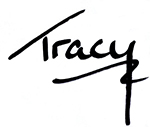
Did you enter NaNoWriMo this year?
Did you win? Congratulations!
What is NaNoWriMo?
If you haven’t heard of this annual competition before, let me explain quickly; Every November, writers can set themselves the challenge of writing a 50,000 word novel in the 30 days of the month.
NaNoWriMo = National Novel Writing Month.
The novel can actually be longer than 50,000 words, but the challenge is simply to get 50,000 words of that single story written in November.
It isn’t as difficult as it sounds. It is only 1,666 words each day. But that’s every day, without fail. As soon as you miss a day, the total you must reach each day increases. Miss one day, and you must write 1,724 words a day.
Miss a week, and you must write 2,173 words every day. That’s 500 more words a day than if you’d written every single day.
So there is a lot of pressure to get the words down.
However, there are a great many support groups, both temporary and permanent, where you can find encouragement and moral support, along with some accountability, which will help you stay on track.
And these are the same places where you can report your “win” for the month.
There is no single winner. Every writer who gets 50K of their book written is a winner and can declare their win as widely as they want.
Plotting in October
Naturally, if you’re an outliner, you should plan your novel in October, so you can immediately get words down on November 1.
If you’re a pantser, you might still want to do some early planning, especially if the idea of writing 50,000 words in 30 days scares you.
Here is a point that many writers miss: You can start writing your novel before November 1, as long as you write 50K words in November. If you think your novel is going to come in much longer, you could get the awkward and slow opening scenes done first. Then you’ll hit November with all cylinders firing.
And…what happens in December?
It’s what happens after November that is the point of this post.
Exactly what do you do with the story that you produced in November?
Given that you may have produced the novel in a white-hot heat and feel it is now a white-hot-mess, then you might be tempted to shovel all of it into the garbage can.
Don’t do that.
Publish your story…eventually
Why waste a month of effort? There’s a few reasons to not throw it out, but publish it, instead.
You wrote the story at a faster pace than you usually do. That tends to silence the internal editor.
When you write with the editor in silent mode, what emerges is your natural voice. That is invaluable.
Plus, you might have plot points dangling, abandoned or orphaned…but they might also suggest all sorts of interesting sub-plots or plot twists that could round out the story, because they came from your sub-conscious, which is where the real writer lives.
You might have written a crappy first draft, but everything is fixable.
Is there ever a case for tossing a story?
I can’t think of any. But I’m parsimonious with my writing. I don’t discard a story, if I think it has any chance of life at all. I’m currently writing book one in a series that I outlined over ten years ago….
Even if you think what you have written is an incoherent pile of excrement, there must be something worth keeping. Analyze your story for the positives. The skerricks that you can salvage.
- Is there a scene you like?
- Is there a character that popped and came alive while you were writing?
- It might be simply that the idea is worth keeping. The concept has strong potential, but your execution in November was shaky. But now you have a strong grasp of what not to do, which is often the way to write a great second draft.
What to do with the story if it has potential.
Read through and tweak.
This is also an assessment phase. Fix bits and pieces on the way through, but don’t spend too much time on editing, because the story might have wholesale changes, yet.
Take notes on what needs fixing.
As you read through, make notes on what is working, what isn’t…anything that occurs to you as you’re reading. Mark what you think are the strengths and weaknesses of the story.
Fix those things.
Now that you have the freedom of time to spend on structure and narrative flow, you can work to make the story work. Use your notes as a guide and reshape the story.
Finish the story, if it isn’t yet finished.
I’m always in favor of finishing a story no matter how badly it has come off the rails. You can’t do anything with an unfinished story, and by making yourself rebuild and finish the story, you’ll learn a lot about writing craft and self-discipline.
And then you’ll have a finished story you can do something useful with, so all the time you’ve spent on it won’t be wasted.
Tip: If possible, try to finish the story at the same pace you were using to win NaNoWriMo. At least 1,666 words a day until it’s done.
If you keep up the same pace, then you’ll be using the same voice, sans internal editor, and the book won’t read as if two different authors wrote it.
Plus you’ll be capturing your natural voice, which will make the story stronger.
Leave the story to freeze.
You don’t have to leave every single story to freeze, but for NaNoWriMo products, I think it’s a good idea.
There is a lot of “oh, only garbage comes out of NaNoWriMo” that goes around writer groups. And if you’re in a NaNoWriMo support group, I’m pretty sure that all through November, you would have heard from other authors that what they’re writing is a heap of rubbish.
That attitude might well have rubbed off on you.
Stick your finished story in a (virtual) drawer and leave it there for at least a month or two, or longer if you can manage it. Leave it for as long as it takes to forget all about the garbage messages, and also, to forget about what you were thinking when you wrote a particular scene or why you made certain choices about characters and dialogue, etc.
There is a marketing advantage to this freezing process that I’ll get to in a minute.
Come back and re-read.
When you come to read the story once more, you will be as close to being a reader new to the story as it is possible to get.
You’ll also read what is on the page, and not what you meant to write, because now you can’t remember what you meant to write.
This will help you assess the true worth of the story. And I’ll be surprised if you don’t come away from this reading feeling that the story was a lot better than you originally thought it was.
Clean up and send to the editor, then publish.
Now you can put your book into your usual production schedule and publish it the normal way.
Do NOT apologize.
Do not tell your editor that this was a NaNoWriMo story. Don’t apologize to anyone for the story’s possible weaknesses, or use NaNoWriMo as an excuse for any shortcomings.
Doing this will instantly make your editor and readers assume that the story is weaker than you normally write and will look for those flaws…and they will find them, for no story is perfect.
Because you have put your book away in a drawer for a while, no one will guess that it is a NaNoWriMo product, because you aren’t dumping a weak, badly structured story upon the world in December and the first quarter of the next year, the way so many NaNoWriMo stories appear.
You’ve built the story up to its full potential. It can stand among your other novels and hold its head up high.
And now you know exactly how fast you can write a novel, because you won NaNoWriMo…and the book that came out of it was a good one, after all.

Write More, Faster Than Ever Before | Are You Prolific?
Editing Your Next Novel? Mark Posey offers fast, writer-friendly edits with zero drama. Check out services »
